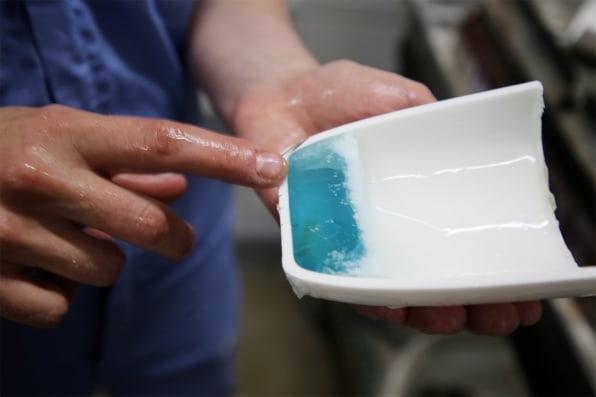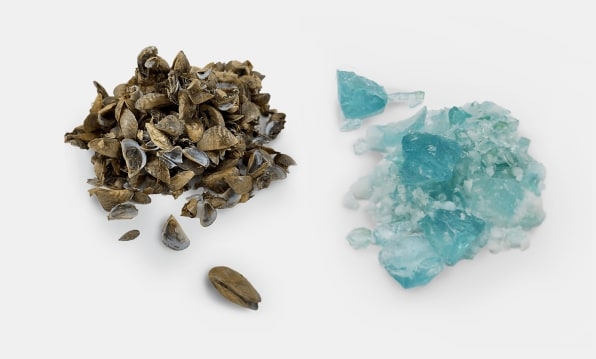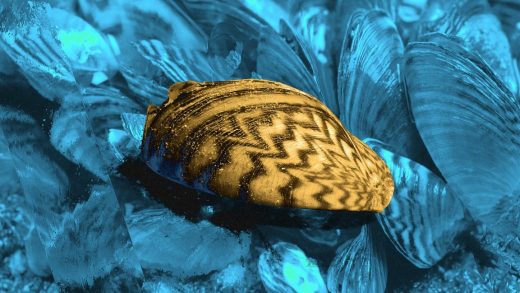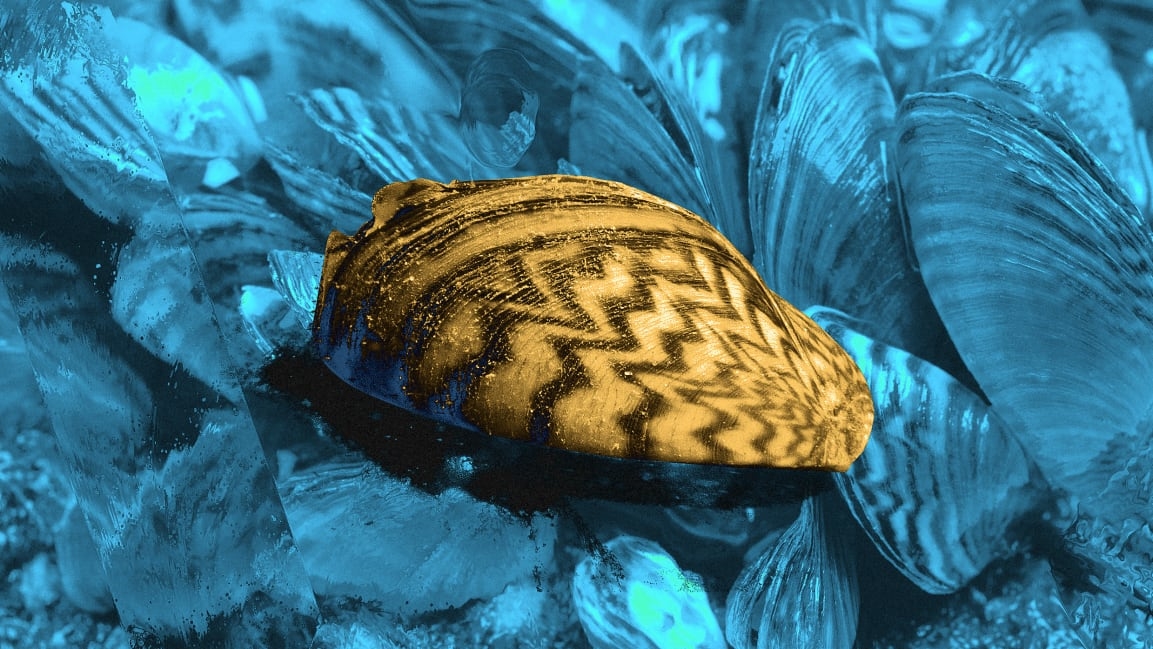Students transform invasive mussels into glass, and the results are beautiful
To walk along the shores of the Great Lakes in summer is generally a delightful experience—fresh water, soft sand, a slight breeze in the dunes. One exception is the crunch under your feet from the shells of an invasive species called zebra mussels.
Color and material design students at the College for Creative Studies in Detroit have come up with an ingenious way to repurpose those harmful zebra mussels, which have been disrupting the Great Lakes ecological system since they first arrived from Europe decades ago, into a force for good.
Individual zebra mussels are small, but together they have a massive effect on the Great Lakes ecosystem. They reproduce and filter water at a rapid pace: Female zebra mussels can produce a million eggs a year, and each adult mussel can filter a liter of water a day. That removes microscopic plants and animals, which disrupts the food chain and makes the water clearer, which in turn allows the sun to penetrate further in the water and increase the growth of rooted aquatic plants. Research also shows zebra and a similar invasive species, quagga mussels, are displacing less efficient native species, by killing them or outcompeting them for food. In some areas, native freshwater mussels have been completely wiped out.

In a video for the project, the group reconsidered the mussels from a design standpoint—rather than a biological threat, they thought of the mussels as an “overabundant material” and asked, “what can we make of them?” The response of Emily Marquette, Mahsa Banadaki, and Wei Huang was to turn them into glass.
That’s possible because mussel shells are made of about 95% calcium carbonate, a chemical compound found in rocks and the shells of marine organisms. Heat them to 1,000 degrees Celsius, and with the necessary chemical and molar calculations, which help determine the mass of a compound you need to get your “recipe” just right, you make glass. And since the mussels are bio accumulators, meaning they filter minerals and trace metals from the water, the resulting glass takes on the color of minerals from the region where it was harvested.

To make this happen, the team gathered up shells from the beach, then boiled, cleaned, ground them up, and sifted them into a powder. From there, they put shell powder into a mold and placed it in a super hot kiln to bake. When the student pulls the cup-shaped mold out of the kiln and bisects it to reveal the glass inside, it looks anything but hot. Inside is about 3 inches of icy-blue glass. The team said the blue color comes from the high copper content of Lake Michigan; had they sourced the mussels from Lake Superior, it might be a totally different color.
All in all, this “biochromatic” glass is a great example of sustainable design, harnessing the natural environment, and repurposing a harmful material for good.
(41)



